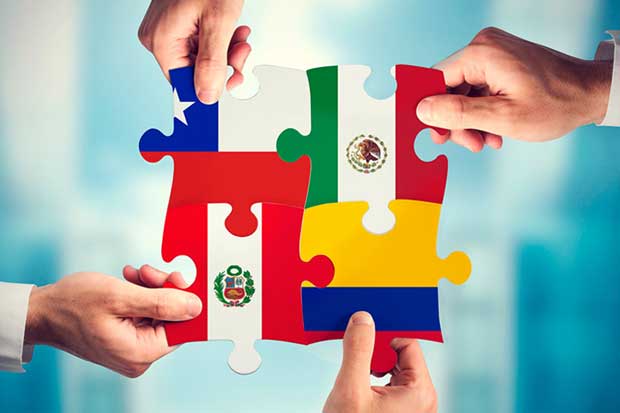On Monday, in the city of Cali, Canada began the first round of formal negotiations to forge a free-trade agreement with the Pacific Alliance. Along with three other nations — Australia, New Zealand, and Singapore — the Canadians are looking to become an “associated state” of the trade bloc, which includes Colombia, Mexico, Chile, and Peru.
The Pacific Alliance has become one of the most successful economic marriages in the hemisphere, and the Canadian government sees increased economic integration as a great step to grow its trade in the region.
The sit down is the culmination of an invitation extended this summer by the Pacific Alliance. Canada has been an observer nation to the alliance since 2012.
The negotiations begin at a time when economic relations with Canada’s primary trading partners in the hemisphere, through the North American Free Trade Agreement (NAFTA), face their greatest uncertainly since the nations entered their historic alliance in the early 1990s.
Though the rhetoric coming out of the White House is not as hostile toward NAFTA as it was in the early days of the President Donald Trump administration, the three nations are involved in renegotiation talks that could lead to some significant changes to an agreement that the U.S. head of state threatened to abandon altogether in the initial months of 2017.
For Canadian Prime Minister Justin Trudeau and his government, looking to other economic partners serves as both insurance in the event that NAFTA provisions worsen its position in North America and as a part of its ongoing mission to increase exports. In particular, its desire to become an “associated state” of the Pacific Alliance would give the country another arrangement with Mexico, by far its largest trade partner among the four Latin American nations.
François-Philippe Champagne, Canada’s minister of international trade, has previously taken trips to Colombia, as well as Chile and Mexico, in the lead up to the talks and says that he is “very excited by the untapped potential for trade” with the Latin American bloc. Specifically, he cited the “growing middle classes and open, market-driven economies” as sources of optimism for increased interaction.
“We share a goal of greater regional economic integration and freer, more progressive trade that can help create more middle-class jobs and opportunities,” said Champagne. “This new step represents a strategic opportunity for Canada to advance its ambitious progressive and diversified trade agenda with important and like-minded emerging markets.”
In a a statement, the government of Canada also said that “a free-trade agreement with the Pacific Alliance offers the prospect to modernize and streamline our existing bilateral agreements with all four Pacific Alliance countries, expand key aspects of these agreements, as well as include progressive trade elements, such as gender, labour, environment and SMEs.”
In all, Canada’s trade with the four countries within the Pacific Alliance last year amounted to US$36.2 billion dollars, according to the government in Ottawa. This represented more than three-fourths of the nation’s total trade with Latin America. The bulk comes from the US$30.8 billion dollars in bilateral trade with Mexico.
For Canada, Colombia represents the smallest partner of the four nations at just US$1.2 billion dollars in bilateral trade last year. Due to the lower price of oil in recent years, this is actually down from the US$1.7 billion in trade in 2014, and it marks about half of the US$2.4 billion in trade Canada did with Peru in 2016. (Chile was right in the middle at US$1.8 billion.)

